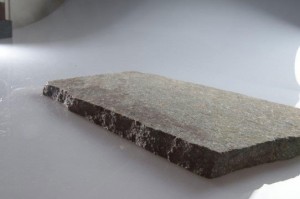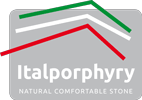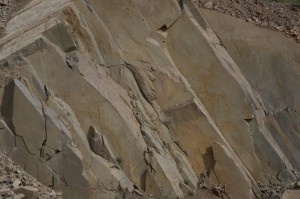The distinctive feature of Italian porphyry is that it can be found in quarries in slabs varying from a few centimetres to some decimetres in thickness. By manually cleaving the rock strata, it is possible to extract some very resistant slabs with at least one flat, intrinsically slip-resistant, natural surface. Thanks to its roughness, this material is simply perfect for floor or wall coverings without altering the true essence of the stone in any way.

An example of natural quarry surface
Thus, what distinguishes Trentino porphyry from most of the other types of stone available on the market is that the latter must necessarily be cut or sawn on all sides, including the natural surfaces, or at least have the ground surface mechanically processed, while porphyry – available in cubes, slabs or tiles – preserves all the characteristics nature gave it, as well as their wonderful colour effects. Possibly no other stone is better able than porphyry to preserve the colours on the quarry surface, and thus the mountain, through to the final product. Certainly no other stone is better able than porphyry to achieve a perfect symbiosis with the surrounding environment, thus enhancing the various project choices, especially when theyboast a balanced elegance and exclusive combinations.

